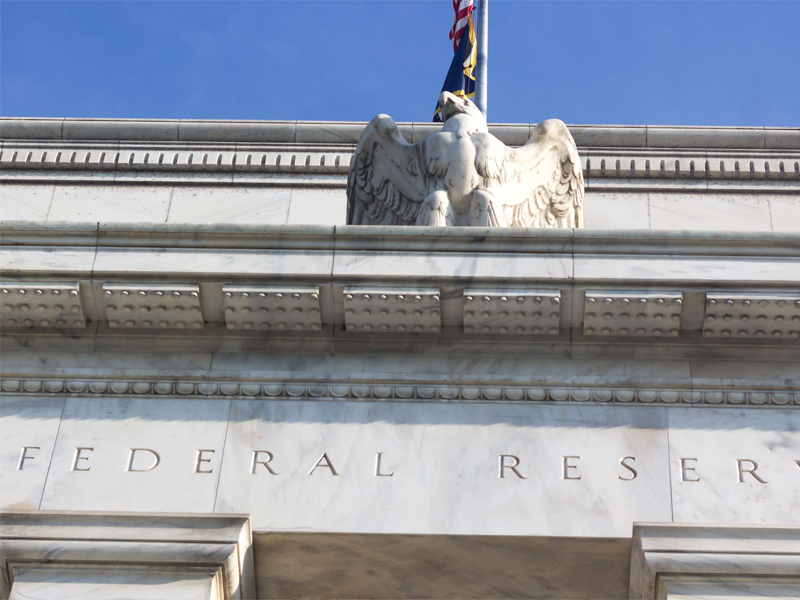
U.S. interest rates continue to rise, with the Federal Reserve Board promising two or three more increases in 2019 and the Bank of Canada struggling to keep up. More increases are in the cards: a massive U.S. federal deficit, most recently pegged at US$1 trillion for fiscal 2019, are likely to put upward pressure on interest rates for bonds. The question is: “Which rates?”
At first glance, they should be for U.S. treasuries. The Treasury Bond Advisory Committee, a financial services industry sounding board for the U.S. Treasury, pointed out in its Fiscal Year 2019 Q1 Report that deficits of US$1 trillion-US$1.5 trillion per year over the next decade will have to be financed. That can be accomplished, the report states, given that the U.S. dollar still is the dominant world reserve currency. Foreign buyers, however, appear skittish. As a result, U.S. primary dealers – the big investment banks such as Goldman Sachs & Co. LLC – are increasing their holdings of U.S. debt. That’s allowing the market to absorb the inventory of government bonds without collapsing prices.
So, if your clients want yield more than safety, they will have to move into corporate bonds. “Increased issuance should put upward pressure on treasury bond yields,” says Josh Nye, senior economist with Royal Bank of Canada in Toronto. To get more bonds sold, he says, the Treasury or the market has to cut its prices, raising treasuries’ yields.
There are no assets more liquid nor, presumably, more safe than U.S. Treasury obligations. Thus there has been no large increase in the 10-year rate, which was about 2.72% at time of writing. For now, the U.S. treasuries’ yield curve isn’t showing serious pressure from increased issuance. But that is not the end of the story.
The market’s appetite for “safe haven” bonds is forcing corporate bond rates upward. The seemingly limitless appetite of private investors and institutions for safe haven government bonds is being satisfied at the expense of other debt – specifically, corporate bonds that must compete with government bonds. The result is a crowding out process: when buyers of government debt shovel their money into treasuries, there is less left over for corporate bonds.
The process is subtle and part of other trends, explains Beata Caranci, senior vice president and chief economist, U.S. and international economics, with Toronto-Dominion Bank in Toronto. It’s not just bond rates that are affected by increased government debt issuance; it also changes who owns the debt.
Central banks will buy some of the new treasuries. But central banks’ buying of sovereign bonds indirectly hits corporate spreads by drying up the yields available to investors who usually focus on government bonds, wrote CIBC World Markets Inc.’s Avery Shenfeld, managing director and chief economist, and Ian Pollock, head of the parent bank’s North American rates strategy desk, in Credit Spreads: This Time Will Be (A Bit) Different, a report published in CIBC’s Economic Insights newsletter in August 2018: “An investor looking to lock in a yield of anything more than 3% simply has to look at spread product [corporate bonds]. Therefore, government bond yields and corporate spreads are negatively correlated.”
“Government debt has to be bought by somebody,” Caranci adds. “That is often foreign investors.”
Thus, the government bond yield curve becomes more vulnerable to the views of foreign investors. That leads to a risk premium added to yields at any level. Yields along the curve are the settlement price of the debt. Foreign investors, often putting security ahead of yield, are widely regarded as swifter to move their money than are U.S. institutional investors, who are required to buy and hold treasuries for regulatory reasons.
Those trends have an impact on Canada. Government of Canada bond interest rates are 70%-80% correlated to those in the U.S., Caranci says: “Rising U.S. federal deficits leave an imprint on Government of Canada yields.”
Sensitive to these debt market risks, bond investors appear to be in a risk-avoidance mood. “The trend is toward quality,” says Norm Levine, managing director at Portfolio Management Corp. in Toronto. “The U.S. has been able to add to the total of its outstanding debt. The marginal buyer is foreign and when foreign countries have deficits with the U.S., they have surplus U.S. dollars that they put into U.S. treasuries. Money is also going out of high-yield debt and into Treasury debt.”
For now, all yields are compressed by the prevailing low level of rates across the investment-grade spectrum. Still, the sentiment is that there is more risk in the market than in the recent past’s flows from escalating trade disputes. Rates will rise eventually. “It’s a ripple effect down from treasuries to lower-grade credits,” explains Adrian Prenc, vice president, chief risk officer and portfolio manager at Marret Asset Management Inc. in Toronto.
The bottom line: government bond prices are holding fairly steady as investors, spooked by political issues and trade turmoil, head for safety. But corporate bond spreads inevitably will widen.